Apple iPhone 7 Plus Review
You can now read:

Introduction
A few years back, Apple – long the smartphone maker content to walk to the beat of its own drum – seemed to finally start reacting to broader market trends and made some sweeping changes to the sizes of its phones. Apple already started experimenting with larger smartphone displays when it introduced the iPhone 5, but really kicked things into overdrive two years back, when we got the one-two punch of the 4.7-inch iPhone 6 and the solidly phablet-sized 5.5-inch iPhone 6 Plus.
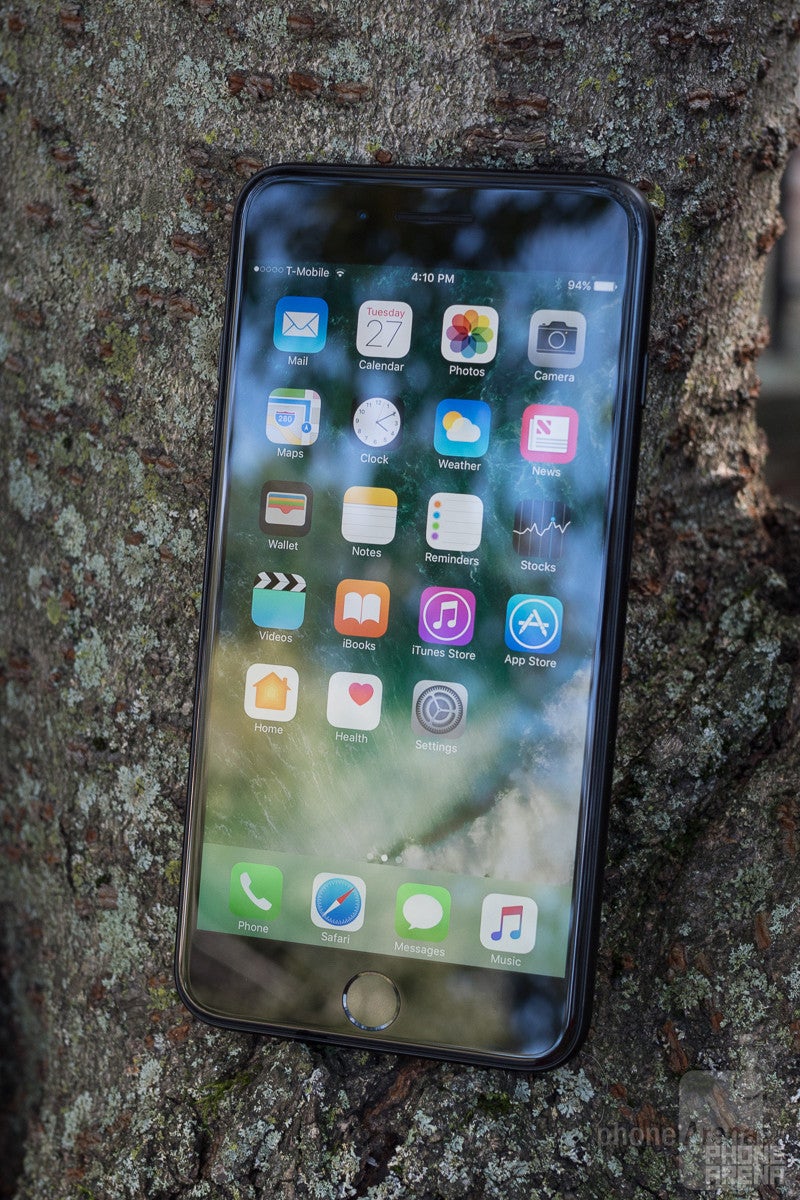
Does that interesting dual-camera system really give the iPhone 7 Plus an edge when it comes to photography? Will the extra RAM help smooth out system performance? And what will the iPhone's biggest battery yet spell for users looking to push operational life to its limit? After going in-depth with our iPhone 7 review, we're turning our attention to the bigger, flashier, and by all accounts better-equipped iPhone 7 Plus. Let's see how she measures up.
In the box:
- Apple iPhone 7 Plus
- EarPods with Lightning plug
- Lightning to 3.5mm analog headphone adapter
- AC adapter
- USB to Lightning cable
- Introductory card
- Safety notice
- Yet more stickers
Design
Make room for the biggest camera bump yet – while Apple cleans things up elsewhere
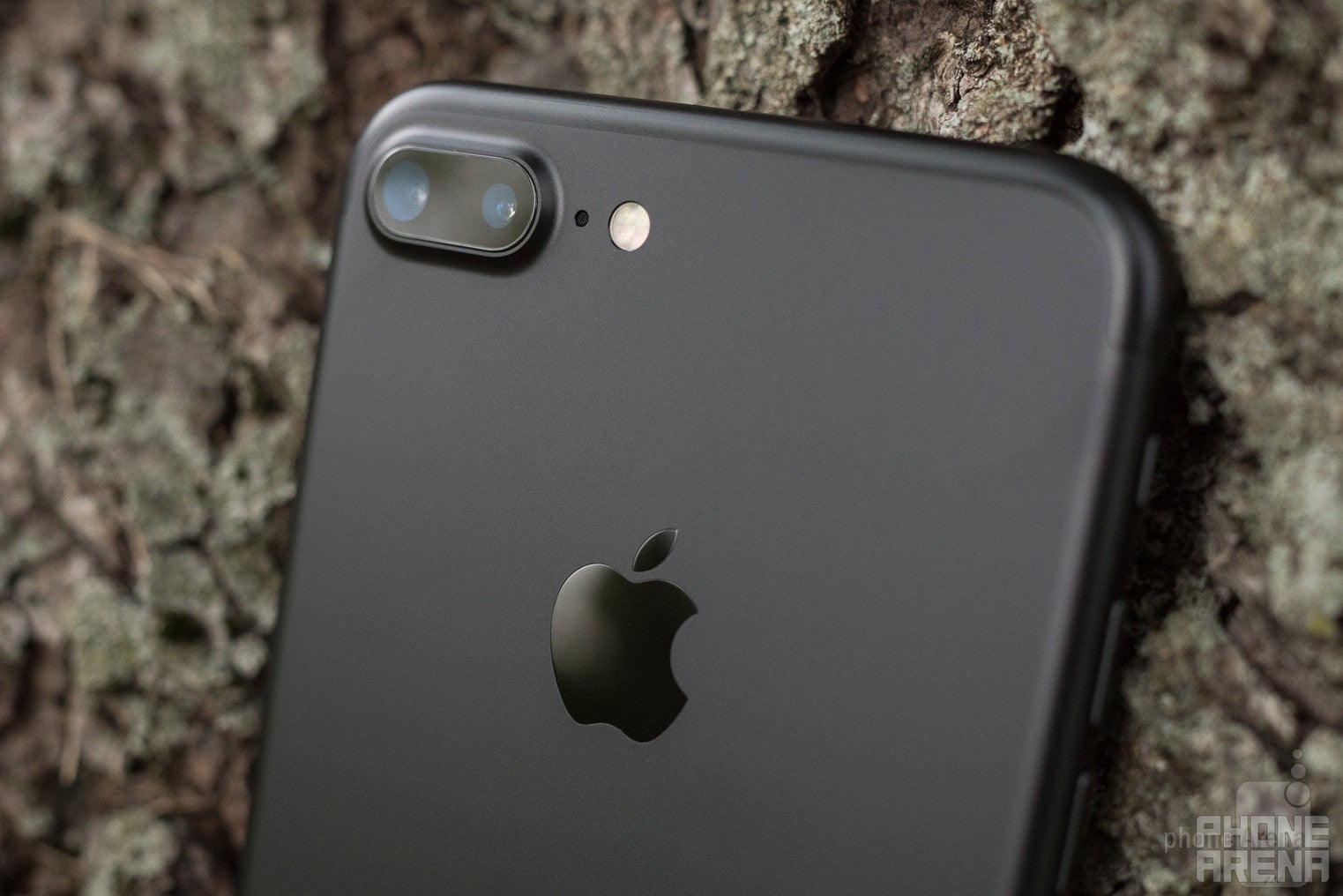
With the iPhone 7 Plus, Apple found itself facing the same design questions it had to tackle when working out what to do for the look of the iPhone 7. Do you take the safe approach and give users more of what they flocked to last year – while risking the characterization of being lazy and failing to innovate? Or do you try something bold, eye-catching, and new – though bringing with it the possibility that a fresh look may not resonate with shoppers?
In the end, we get a little of both, though with the iPhone 7 Plus, especially, Apple finds itself going further out on a limb to offer users something new – with all the risk that entails.
Like the iPhone 7 and the iPhone 6s, the iPhone 7 Plus and iPhone 6s Plus share a lot of the same design elements, but the differences here are arguably even easier to spot. By far the most prominent change is the new camera bump on the handset's rear, now elongated to accommodate the phone's additional camera sensor.
We don't have to move far to spot other significant changes, and from that new camera bump our eyes are drawn to the iPhone 7 Plus's new super-inconspicuous antenna lines. At least, they no longer stretch conspicuously across the phone's back, instead tucked away in a pair of slithering curves hugging the handset's top and bottom edges. Between the new out-of-the-way shape and improved color-matching, they might as well not be there at all.
We've got another upgrade around front, as the familiar clicky physical home button is replaced by a new solid-state component. It looks nearly identical, feels much the same as your finger glides over it, and still houses Apple's Touch ID fingerprint scanner. Except now it doesn't move when you press it.
Instead, Apple relies on a combination of the button's force-measuring sensors and the phone's upgraded Taptic Engine vibration motor to respond to firm presses with an emulated “click,” keeping the general feel of the old physical button while moving to some more advanced technology. Even with adjustable haptic feedback levels, it never comes across quite the same as the original, but it's not long before the new response feels just like home (no pun intended).
Button layout remains the same as last year (and the year before), but port placement gets a big change, as Apple drops the phone's analog headphone jack – a change we'll discuss in some depth later.
As for its size and shape, the iPhone 7 Plus measures in with precisely the same dimensions as the iPhone 6s Plus – anomalies like the new camera-bump shape notwithstanding – though the new phone weighs every so slightly less, dropping from 192 to 188 grams.
Over the years, Apple's slowly warmed to the idea that not all iPhone users want a phone that looks exactly alike, and the company's been getting better at giving us a variety of options. This year we see new colors take the focus, as the familiar gold, silver, and rose gold are joined by two new black shades: a low-key matte black and a glossy jet black. For this review we're looking at the black iPhone 7 Plus, as jet black handsets have proved harder to come across than iOS-powered unicorns. There's a consequence to the arrival of these new colors, though, as the old space gray (aka darker silver) option vanishes.
Finally, Apple's formally christened this year's iPhones as its first water-resistant models, with an IP67 rating for water and dust protection. There's no cumbersome port covers or anything to deal with – Apple pulls off the feat without compromising the iPhone 7 Plus's design. But before you go jump in a pool with the 7 Plus in your pocket, be advised: this may be Apple's first officially water-resistant iPhone, but the company both warns that the protection may decrease over time (as seals degrade and components wear) and absolves itself of any duty to perform warranty service related to water damage.
Display
Apple promises big, and delivers even bigger (or, rather, brighter)
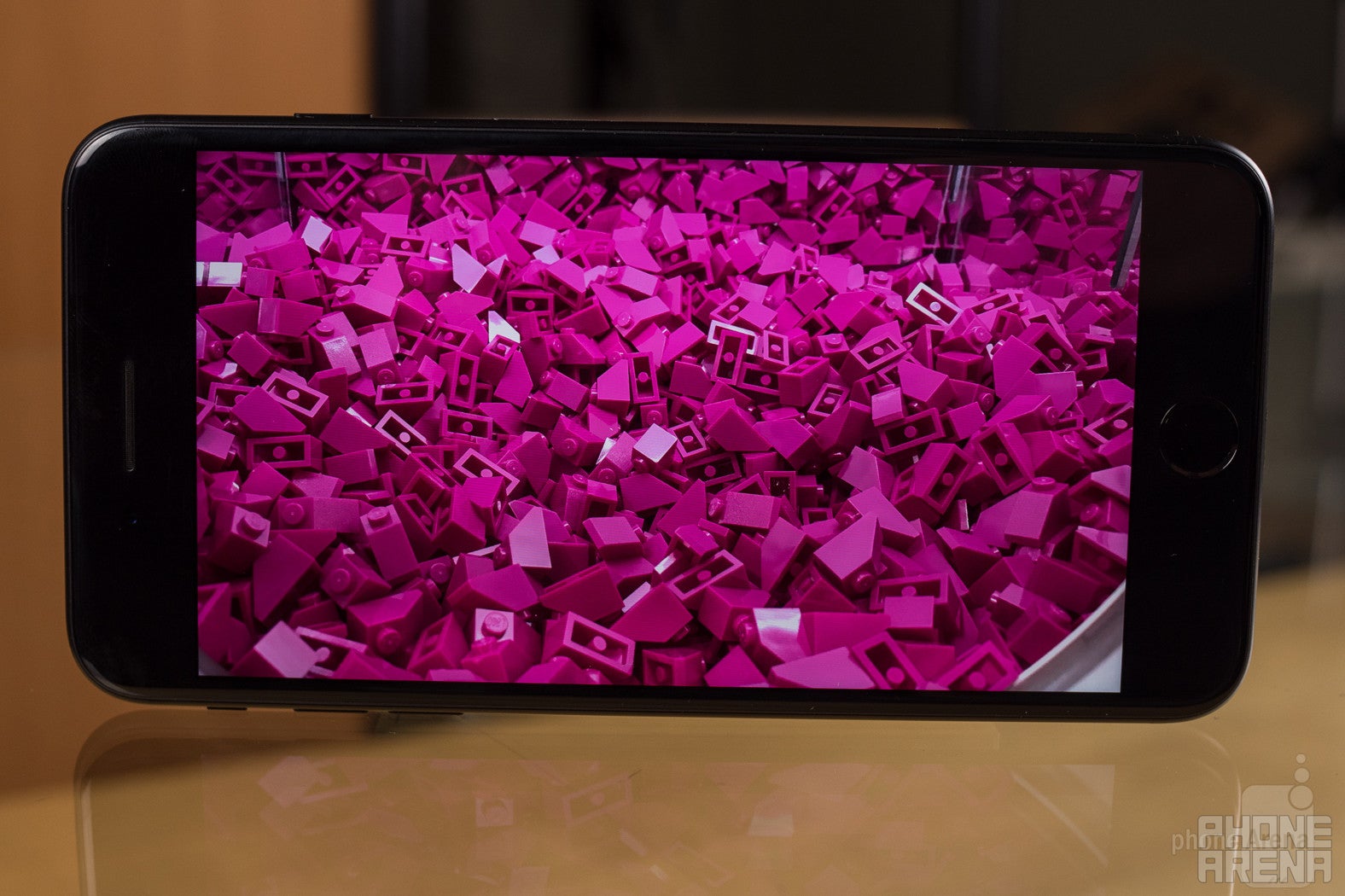
While this year that new dual camera may be grabbing all the Plus headlines, if there's one phone component that really defines Apple's larger iPhone offering, it's the big 5.5-inch display. It's back with the same 1080 x 1920 resolution Apple's been using with its Plus models since their introduction, but that's not to say that this year's screen isn't without its upgrades. Though size and resolution remain unchanged, Apple's delivering the same sorts of brightness and color enhancements that it's bringing to the smaller iPhone 7.
According to Apple, the screens on both the new iPhone 7 and iPhone 7 Plus get the same upgrades: brighter output capable of hitting 625 nits, and a wider color gamut, able to more accurately reproduce a broader array of shades.
The iPhone 7 Plus actually came out quite a bit brighter in our testing, maxing out north of 670 nits.
Like with the iPhone 7, you'll only hit that very peak brightness with auto-brightness engaged. In manual mode, you can get to around 570 nits, which is still plenty bright.
Interface and Functionality
Celebrating all of iOS 10's improvements on the big screen
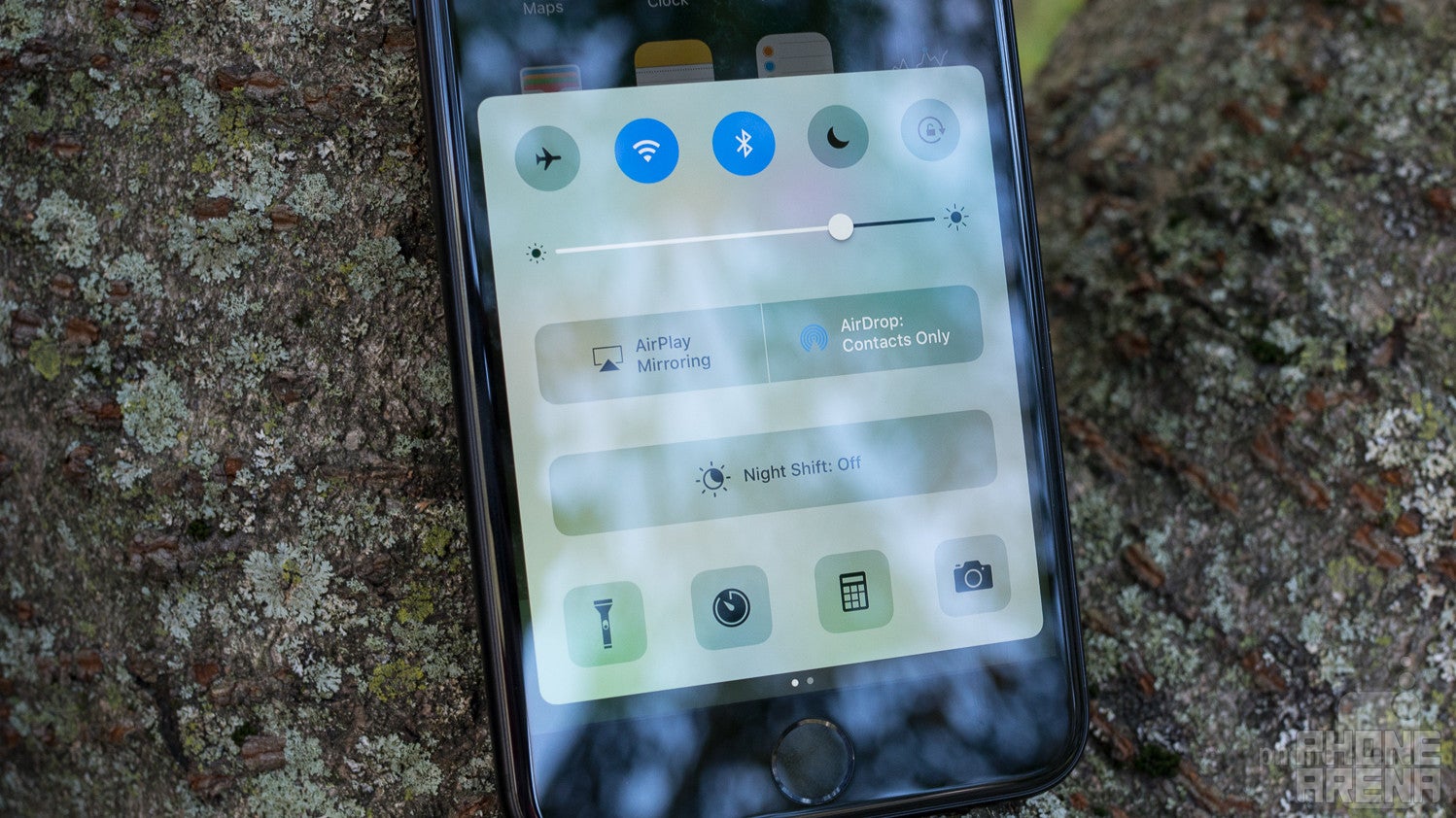
The new iOS 10 landed for existing Apple devices ahead of the iPhone 7 Plus's release, giving us a head start at checking out all the new functionality bundled with the company's latest operating system refresh.
As expected, it's utterly feature-packed, and we've already spent some time outlining all the improved ways to interact with your phone that await users within. Upgrades include a drastically overhauled Messages, adding stickers, new text effects, emoji galore, and even a handwriting mode. Some purists will complain that Apple's over-complicating what should be simple text-based communication, but in a world where messaging apps loaded with special effects and gimmicks dominate app charts, Apple appears to find itself forced to evolve to stay relevant.
Other changes include expanded 3D Touch controls, powerful new lockscreen widgets, Siri connectivity for third-party apps, and new versions of familiar apps like Maps, Music, Photos, and News. Apple's not shy about bringing its new iOS features to existing hardware, either, and even new functionality like raise-to-wake is supported on last year's phones. And building off the eyestrain-reducing Night Shift of iOS 9.3, Apple implements a new Bedtime mode in the system clock that keeps trying to gently nudge us towards healthier sleep patterns.
We don't see much in the way of iPhone 7 Plus-specific enhancements, but existing phablet-friendly features continue to make their presence felt, and just like you've been able to for the past couple years, performing a quick double-tap on the home button engages Reachability mode, bringing the tippy-top of that big 5.5-inch screen down within one-handed reach.
There's not one stand-out feature or new app that really defines iOS 10 – though for a certain Snapchat-loving cadre of users, the tricked-out Messages is probably coolest thing Apple's ever done – but these smaller enhancements are so numerous, varied, and consistently well executed that it's hard not to love what Apple's come up with.
Processor and Memory
That A10 Fusion's a beast, but are we putting the extra RAM to good use?
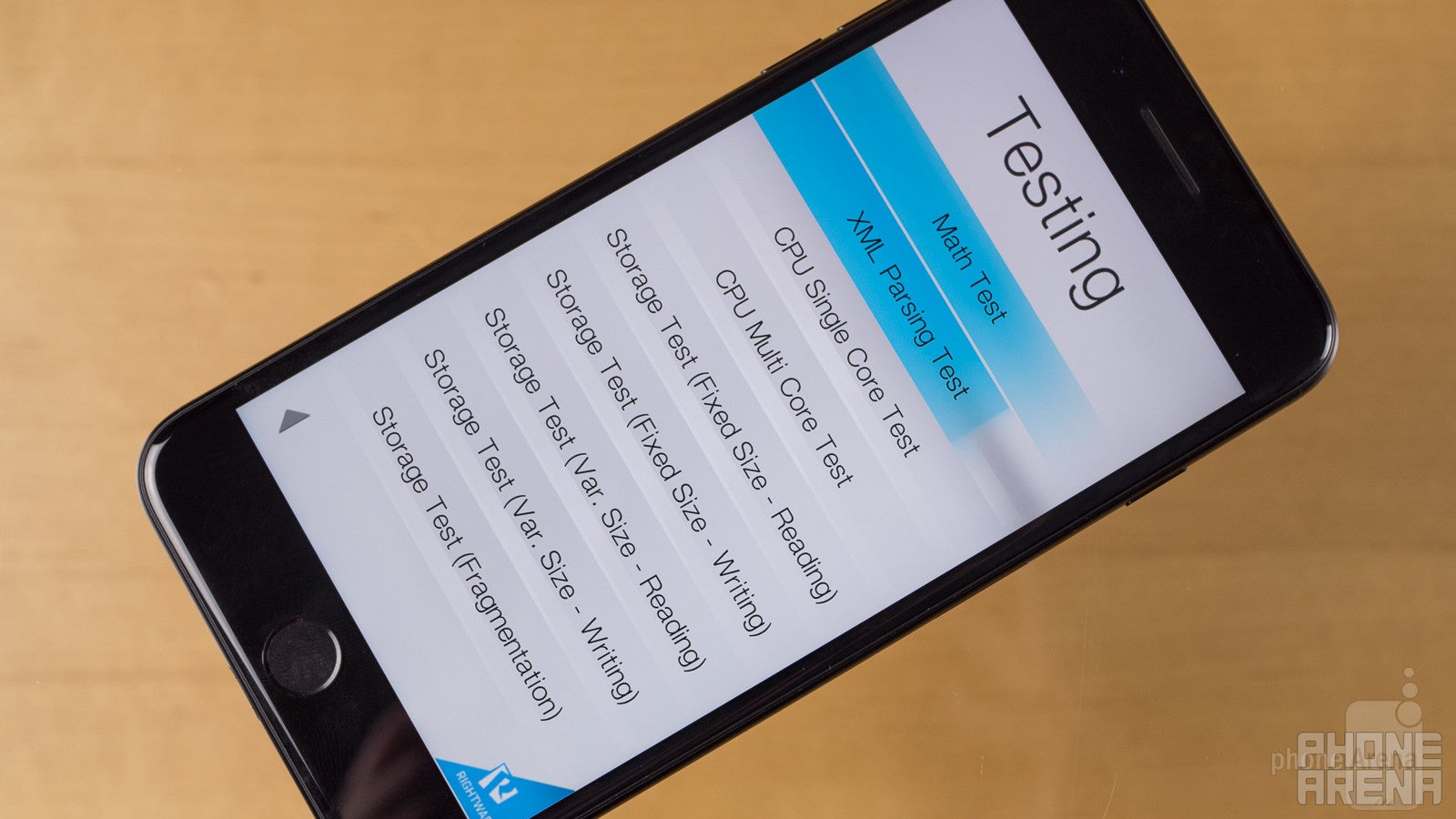
Fans might adore Apple smartphones for their design, easy-to-use interface, or rich ecosystem of software and media, but some blistering performance doesn't hurt matters any. With the iPhone 7 and iPhone 7 Plus, Apple's introducing its latest processor, the quad-core 64-bit A10. Well, not just the A10, either – Apple's giving its new chip a nickname, as we meet the A10 Fusion.
That naming change should hint that we're dealing with something special, and our testing generally seems to support that idea. Various benchmarks show performance improving in the 20 to 40 percent range over the iPhone 6s, and while we didn't measure a huge change in graphics performance, the trend is certainly upwards.
So far we've been talking about visible changes between the iPhone 7 Plus and iPhone 7 – the new camera, the brighter display – but there's also a big one lurking under the surface, as Apple quietly increases system memory for the larger iPhone: while the iPhone 7 has 2GB of RAM, the iPhone 7 Plus arrives with 3GB.
The extra RAM doesn't immediately make its presence felt, and may be more a bit future-proofing than anything, but if you're an exceptionally heavy multi-tasking user, chances are you'll start reaping its benefits ahead of the rest of us.
Benchmarks paint the story of a largely evenly matched iPhone 7 and iPhone 7 Plus. Tests have the two phones coming in very close to each other, and considering how much hardware they share, that shouldn't be surprising. The slim differences we see might be explained by the extra RAM on the Plus, or maybe the impact of rendering graphics in a higher resolution. No one phone emerges as the clearly more powerful option, helping take performance out of your purchasing decision.
Shifting focus to storage, the hot news here is that 16GB is officially dead, and the starting storage capacity for the iPhone 7 Plus is a healthy 32GB. Even sales of the 6s and 6s Plus are losing their 16GB option, and only the iPhone SE will continue to offer such meager storage.
More than that, though, maximum storage reaches new heights with the introduction of a lofty 256GB option, for $100 more than 128GB (which itself comes in $100 more than the base 32GB level).
This is also the first time we're seeing Apple tie storage choices to another phone hardware option: in this case, color. The shiny new jet black finish isn't just the hardest-to-come-by iPhone 7 Plus color, it's also restricted to models with 128GB or 256GB storage.
That's especially interesting, as it suggests Apple may be using the big markup it charges on flash storage to offset any added expense implementing the snazzy jet black color requires. Right now that's relatively unobjectionable, but will we see future iPhones where new hardware features or actual phone functionality is tied to certain storage tiers?
Connectivity
Broad network compatibility gets even better with higher-speed support
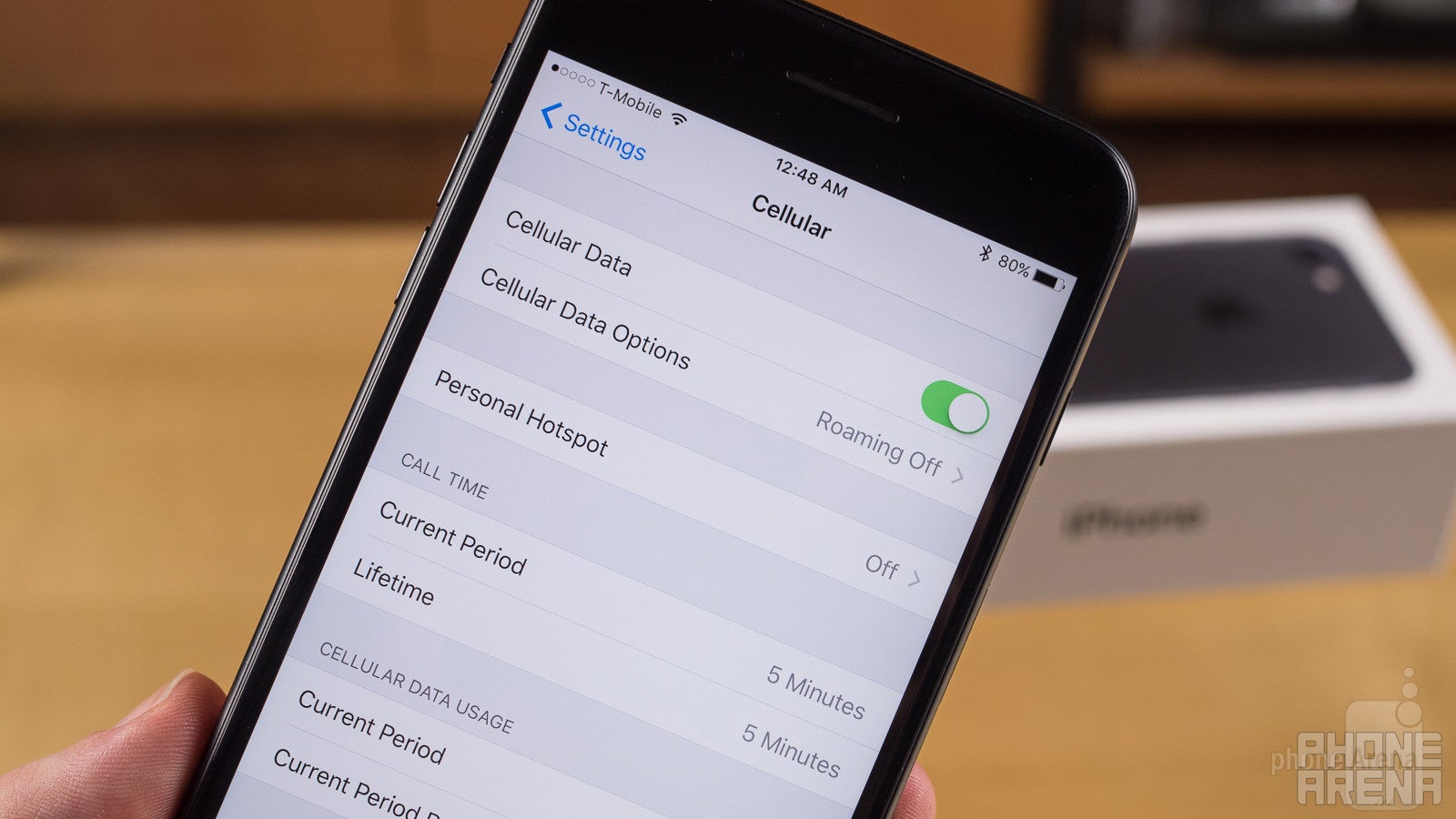
We're at a point now with cellular technologies where it's easy to take a lot for granted. Band support's been getting so good, and LTE data so fast, that we just assume that the latest handsets are going to milk the wireless spectrum for all it's worth.
The iPhone 7 Plus doesn't let us down there, and this year Apple even manages to deliver (what has the potential to be) a respectable upgrade, increasing the phone's theoretical maximum LTE Advanced bandwidth from 300 to 450 megabits per second.
Will you actually see those kind of speeds? Well, between the need for carriers to build out their networks to support such throughput, to say nothing of the myriad other users all fighting with you for access to that bandwidth, we wouldn't suggest holding your breath. Ultimately, though, it really matters little: the iPhone 7 Plus pulls down some nice, fast data, and the capacity for it to do so even faster is just the icing on the cake.
Camera
The camera is so nice, they made it twice

A lot of iPhone Plus fans may simply prefer the feel of a larger smartphone, but for those looking for a little extra functionality, as well, Apple's been happy to deliver in the form of the phone's camera. In previous generations, that meant having the assistance of optical image stabilization, but this year OIS has gone mainstream, and can be found on the iPhone 7 and 7 Plus alike. Now Apple's back with what sure seems like an even bigger hook, giving the iPhone 7 Plus a pair of 12MP cameras – and that extra hardware lets the phone pull off some neat tricks.
If you like what you've seen from the new 12MP camera on the iPhone 7, the 7 Plus isn't going to let you down, either. And why should it? It's got the very same wide-angle 12MP camera.
But that camera's joined by a slightly differently equipped cousin, another 12MP shooter, but one with a different lens, capable of giving us a telephoto view. That means we get our first taste of optical zoom on an iPhone, being able to choose between full-field and a new actual 2x zoom mode. If you want to push even further, you can dial up the digital zoom to some pretty extreme heights, but it's this pure, uncompromising 2x optical zoom that's got us so excited.

Image quality
Lossless optical zoom, where have you been all my life?
As you'd expect, having the option of optical zoom quickly changes the way you look at shots in the iPhone 7 Plus's camera app; what might be an otherwise bland scene when viewed from a distance can quickly become a lot more interesting as you tighten up on one particular area with the help of the 2x telephoto mode.
Just like a proper optical zoom should offer, there's no discernible loss of detail when taking advantage of 2x shooting. Camera movement does feel a little loose, though – you'll have to get used to the exaggerated effect small changes in camera position have on the tightly cropped area you're trying to capture – and while Apple's stabilization system helps reduce shakes and jitters (which is even more important when we're zoomed in), it also has the side effect of making the viewfinder feel a little “floaty” at times.
Sadly, not all of the dual-camera's tricks are ready to go at launch, and a promised bokeh-effect portrait mode is only currently available as part of the iOS 10.1 beta. It is supposed to hit the main release soon, but keep in mind that if you're buying the phone for its camera features, you'll have a little bit of a wait before you can enjoy them all.
Just like on the iPhone 7, Apple's playing with some larger apertures, and the wide-angle camera on the Plus gets the same f/1.8 aperture as the smaller phone's camera (the telephoto lens is f/2.8), allowing more light to illuminate its sensor. That spells sharper pics of moving subjects, as well as enhanced low-light performance. And all that light flows into the iPhone 7 Plus's camera with the help of an upgraded, more complex six-element lens system. With the combination of optical stabilization and the faster shutter speeds that an f/1.8 aperture affords, it's easier than ever to snap clean, sharp pics that are free of unwanted motion blur.
If all the extra light the iPhone 7 Plus's camera is gathering doesn't prove enough, Apple's come through with a super-charged flash this year, moving from a two-element LED flash on the iPhone 6s to a quad-LED flash here. More than just give you more light when you need it, a flicker-detection system helps compensate for unfavorable lighting conditions, keeping your shots looking evenly lit.
The phone's front-facer gets the same resolution bump we see on the iPhone 7, from 5MP to 7MP. There's also the same wider color capture as on the rear camera, and the higher-res sensor means that video recording now extends to 1080p.
The availability of optical zoom doesn't entirely reinvent what it's like to take pictures with an iPhone, but it sure opens an exciting new chapter in that story. Spend enough time with the camera on the iPhone 7 Plus and you may find yourself unable to go back to the comparatively limited (though on its own, still extremely impressive) iPhone 7 camera.
Video recording
A well-done, flexible zoom brings a new dimension to moving pictures
The iPhone 7 Plus does a great job at shooting video, using its optical stabilization just as readily in video as it can in still pics – all while working with Apple's software-stabilizing algorithms – which has the effect of producing some impressively low-shake videos. You may not get Steadicam-like results with the iPhone 7 Plus, but minor jitters will no longer threaten to ruin an otherwise perfect shot.
And like the smaller iPhone 7, the iPhone 7 Plus also takes advantage of its cameras' larger aperture (at least for the wide-angle sensor) and improved color gamut for video, just like on still pics.
But the real winner here is telephoto mode, and the added availability of optical zoom gives the 7 Plus a leg up when it comes to video recording. The software makes it a snap to adjust your level of zoom while already in the middle of recording a video, helping you to capture those blink-and-you'll-miss-it moments.
Multimedia
Big, loud, stereo sound can't quite distract from an absent headphone jack
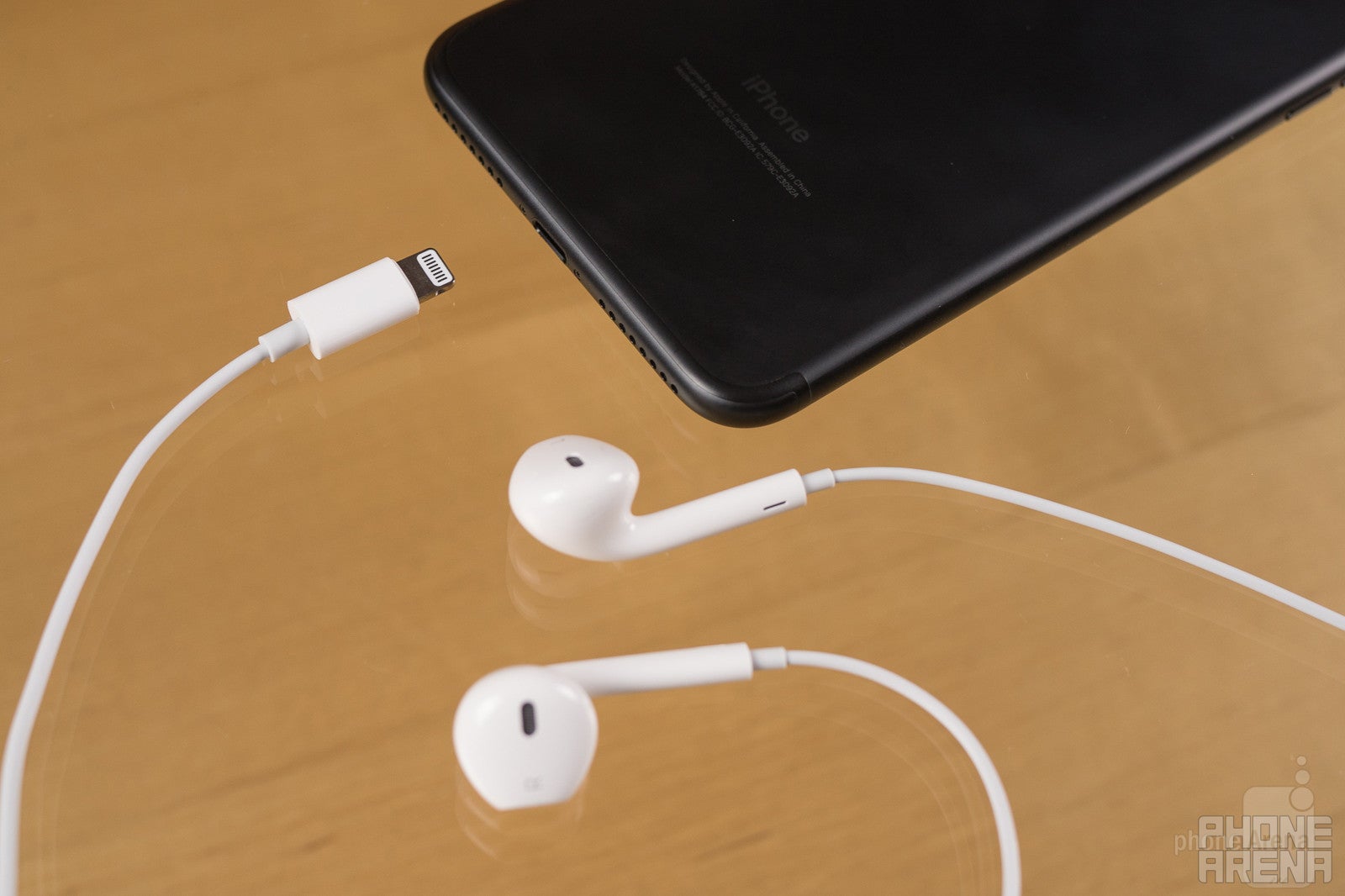
Apple's taken some big steps with the multimedia package on the iPhone 7 Plus, delivering long-requested features, but also stripping the phone of basic functionality we once took for granted. Does that add up to a win, or will controversy poison any potential improvements?
Let's start with the elephant in the room: the iPhone 7 Plus no longer has an analog headphone jack. Instead, the phone now comes with a pair of Lightning-equipped EarPods.
Apple's not the first phone-maker to take this path, but its position in the market makes the decision to remove the iPhone's headphone jack one with the potential to have industry-shaking consequences.
As we'd only hope, the new Lightning EarPods sound great – though we'd be hard-pressed to call them a big leap forward over the older analog models.
If you do intend to hold on to your old analog headphones, Apple thankfully includes an adapter with the iPhone 7 Plus that still allows them to be used with the Lightning port. The adapter works quite well, and our tests suggest it may even be superior to the iPhone 6's built-in headphone jack. Its one (and admittedly, quite big) problem is that it seems fantastically easy to misplace. Replacements are cheap enough, with Apple selling them for less than $10, but we'd still rather not have one more accessory to carry around and keep track of.
With the iPhone 7, it's easier to rationalize the loss of the headphone jack as a space-saving concession: there's only so much phone real estate to go around, and dropping the headphone jack frees up room for what Apple describes as a barometric vent, allowing the sensor to function even with the phone's new water-resistant design. But with the iPhone 7 Plus it's more difficult to argue that space is at a premium. Ultimately, we're going to have to accept that this is a change Apple wanted to make, not one it felt like it had to.
The other big audio news for the iPhone 7 Plus is that the handset's finally picked up stereo speakers – albeit in a bit of an unusual arrangement. Instead of a pair of edge-mounted or pair of front-facing speakers, Apple's splitting the difference: the familiar bottom-edge speaker is joined by one in the phone's earpiece.
The earpiece speaker produces sound that's a lot less bass-heavy than the bottom speaker, but even with different response curves, the two add up to produce some nice audio that, what it lacks in balance, it makes up for with long-overdue stereo separation.
Beyond all that stereo goodness, the new speaker pair is seriously loud – significantly more so than the iPhone 6s Plus. We've got two complaints, though. One is that the iPhone 7 Plus looks like it should be even louder – one of the two bottom-edge speaker grilles (the one on the left where the headphone jack used to be) now looks like there's another speaker hiding in there, but in reality, there's only a microphone.
Call Quality
Even with all these other big upgrades, calls sound as clean as ever
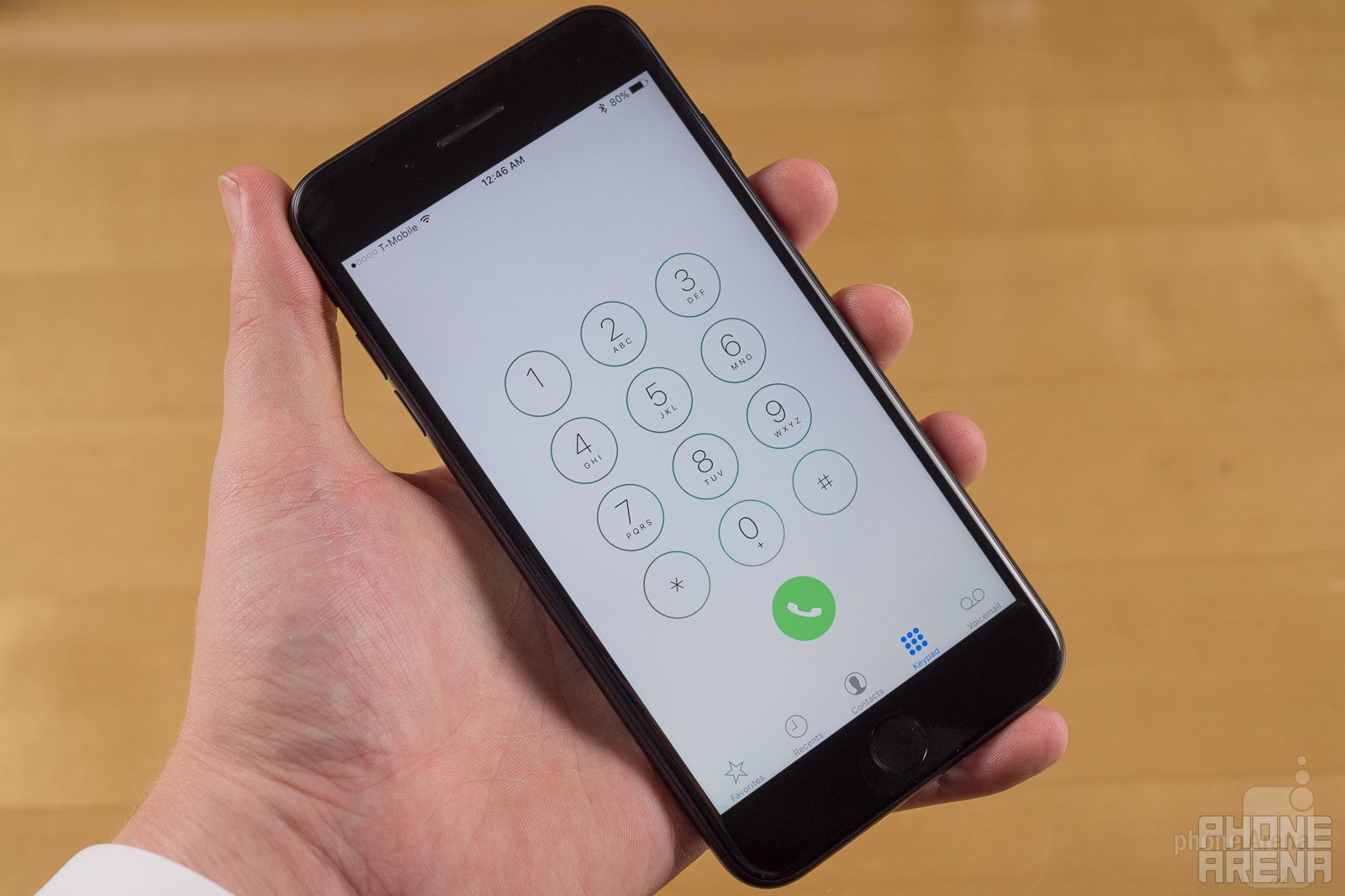
With all the high-end hardware and advanced functionality Apple's throwing at us, we'd hate to be let down by less-than-stellar call quality with the iPhone 7 Plus. And for the most part, we weren't.
Generally speaking, calls sounded clean and loud, leaving us with little trouble hearing the party on the other end. Once in a while, a bad connection seemed to sneak through, but as is so often the case, we're inclined to chalk that up to issues with carrier networks rather than a flaw in the phone itself.
As a larger handset, it's a bit less comfortable for voice calls than its smaller sibling, but a lot of personal preference (to say nothing of hand size) is going to influence how significant an issue that ultimately is. And even if the Plus isn't super-comfortable to use as a hold-to-head voice handset, speakerphone performance is quite satisfying, as we'd only expect after our experience with multimedia testing.
Of course, great-sounding calls aren't much use when you don't want to be getting those calls in the first place, but new iOS 10 call-blocking features allows apps to empower you to control just who's able to reach your phone.
Battery Life
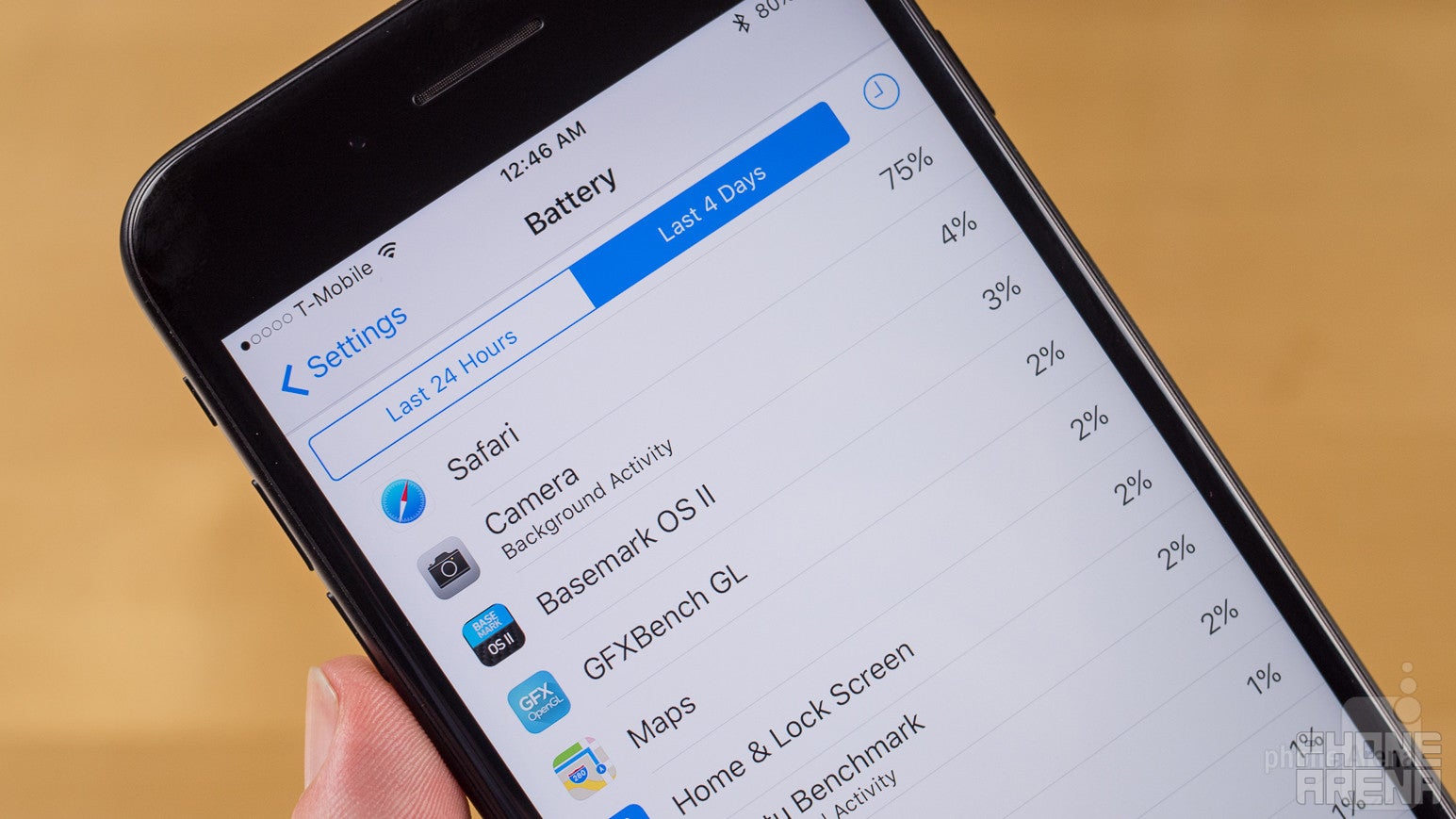
The iPhone 7 Plus has no shortage of battery capacity, and its 2,900mAh battery is a modest upgrade over the 2,750mAh component in last year's iPhone 6s Plus.
However, the bigger battery doesn't necessarily translate into longer operational life, as our impressions from the iPhone 7 Plus battery life point to longevity somewhere near the 6s Plus ballpark. These observations are confirmed by our custom battery test, in which the iPhone 7 Plus scored almost identically to the 6s Plus, as you can see in the following chart.
On one hand, that's fine: Apple gave the iPhone 7 Plus an upgraded, faster processor, and if we can get those speed gains without paying for it with drastically shorter battery life, that should be a win, right? It's just that we'd love to see a higher-capacity battery actually translate into longer battery life for once, rather than have its extra juice instantly consumed by other phone upgrades.
Conclusion
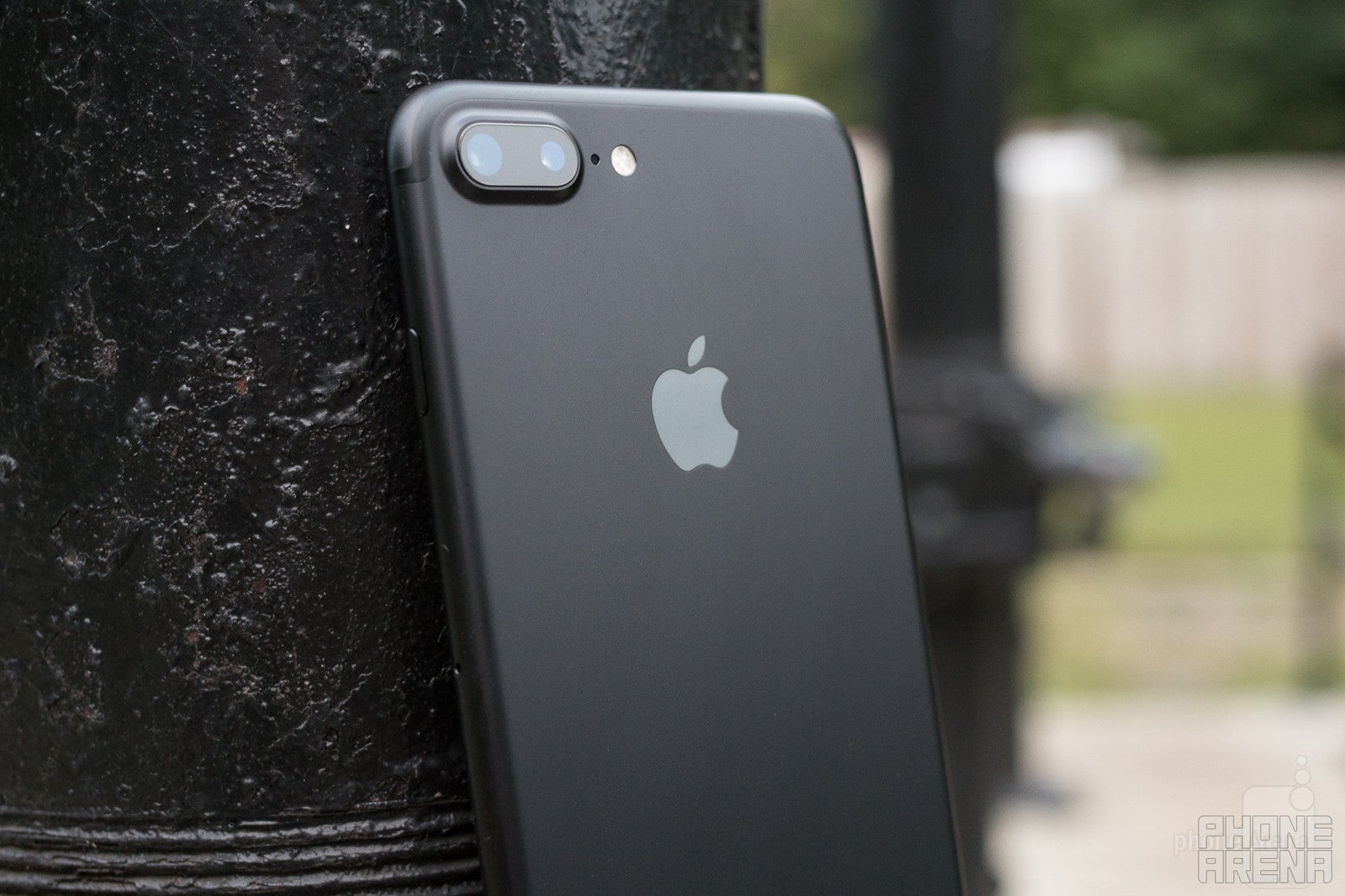
With the iPhone 7 Plus, Apple's made the question of “which iPhone do I get?” more complicated than ever before.
If you have strong feelings for big phones versus little phones, you're mind's probably already made up, but users on the fence are faced with far more considerations with this generation of iPhones than any since the Plus variant was introduced.
Is that dual-camera system worth upgrading to the iPhone 7 Plus on its own? For now, maybe not, but upcoming features like its blurred-background bokeh mode may change that quite quickly. Other Plus-model upgrades, like the extra gigabyte of RAM, are much more difficult to appreciate, and we can't imagine seeing that factor too heavily into purchasing decisions.
It's also important to discuss what Apple's doing here that users might actively dislike. Probably the easiest target to hang on the iPhone 7 Plus is the phone's missing headphone jack, but even that's not the disaster it could be. While we don't quite agree with the way Apple's framing itself as courageous for dropping the port, it's still a big move that – as we mentioned – is going to have far-reaching consequences. Do benefits like the phone's waterproofing and its larger battery outweigh the inconvenience of needing that adapter for older headphones? Or the need to buy all-new Lightning-equipped headphones? None of those answers are immediately obvious, and it may be some time before we can say how wise a decision killing the headphone jack really was.
Ultimately, though, the iPhone 7 Plus is evidence of an Apple that's not afraid to take risks, to change things up in the goal of further perfecting its best-equipped smartphone option. And while some of those changes are touched by controversy, and others feel like they haven't quite realized their full potential, the iPhone 7 Plus dares to take Apple's smartphones to a fascinating new place – and we can't wait to see where this drive to innovate brings the company next.
Software version of the review unit: iOS 10.0.2 (14A456)

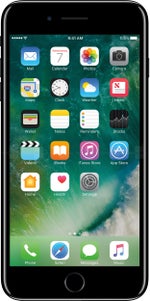
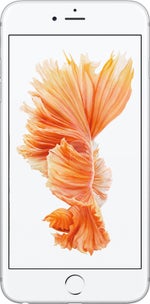

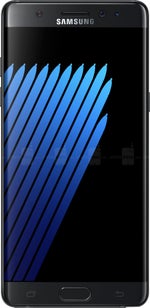































Things that are NOT allowed: